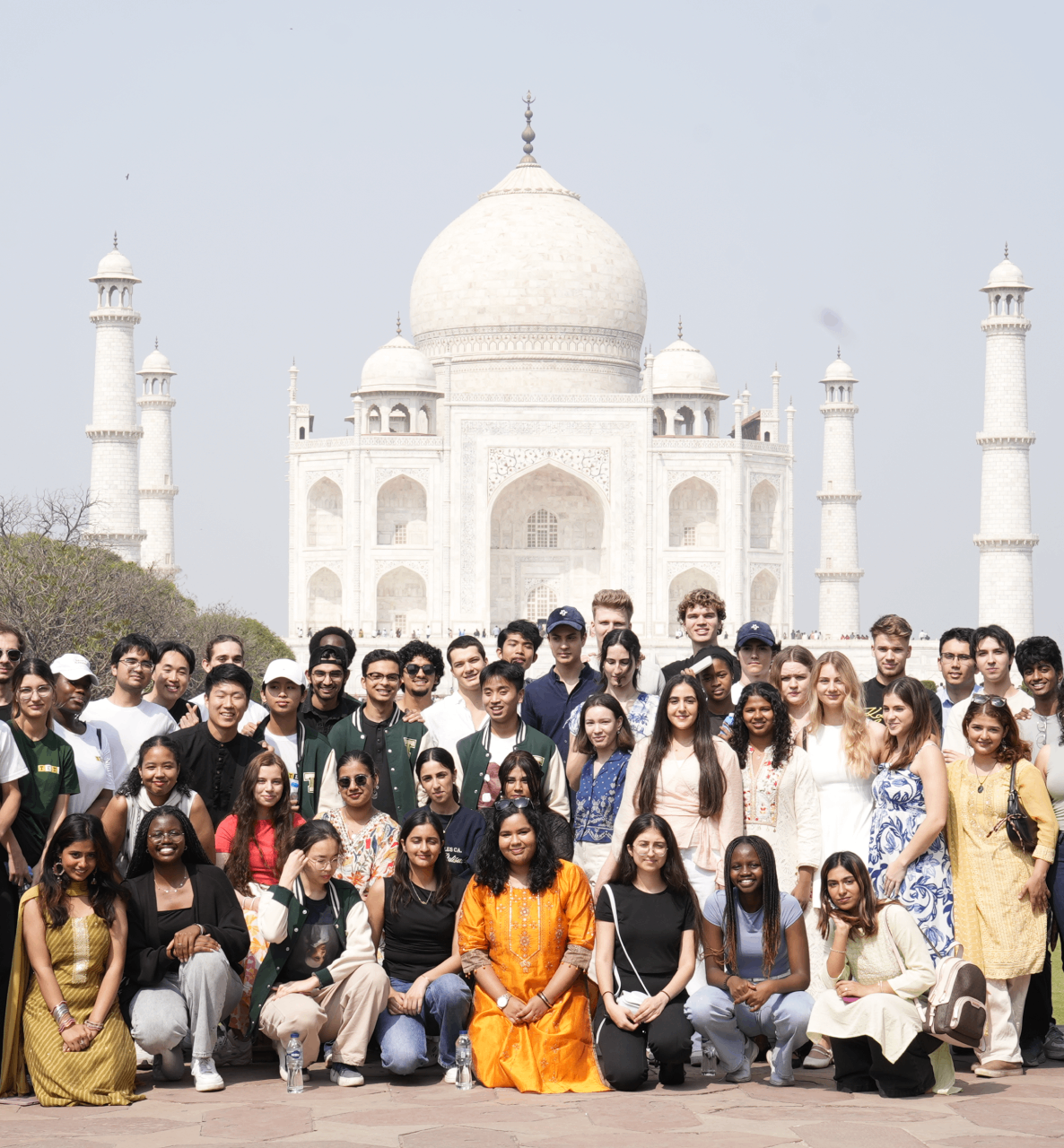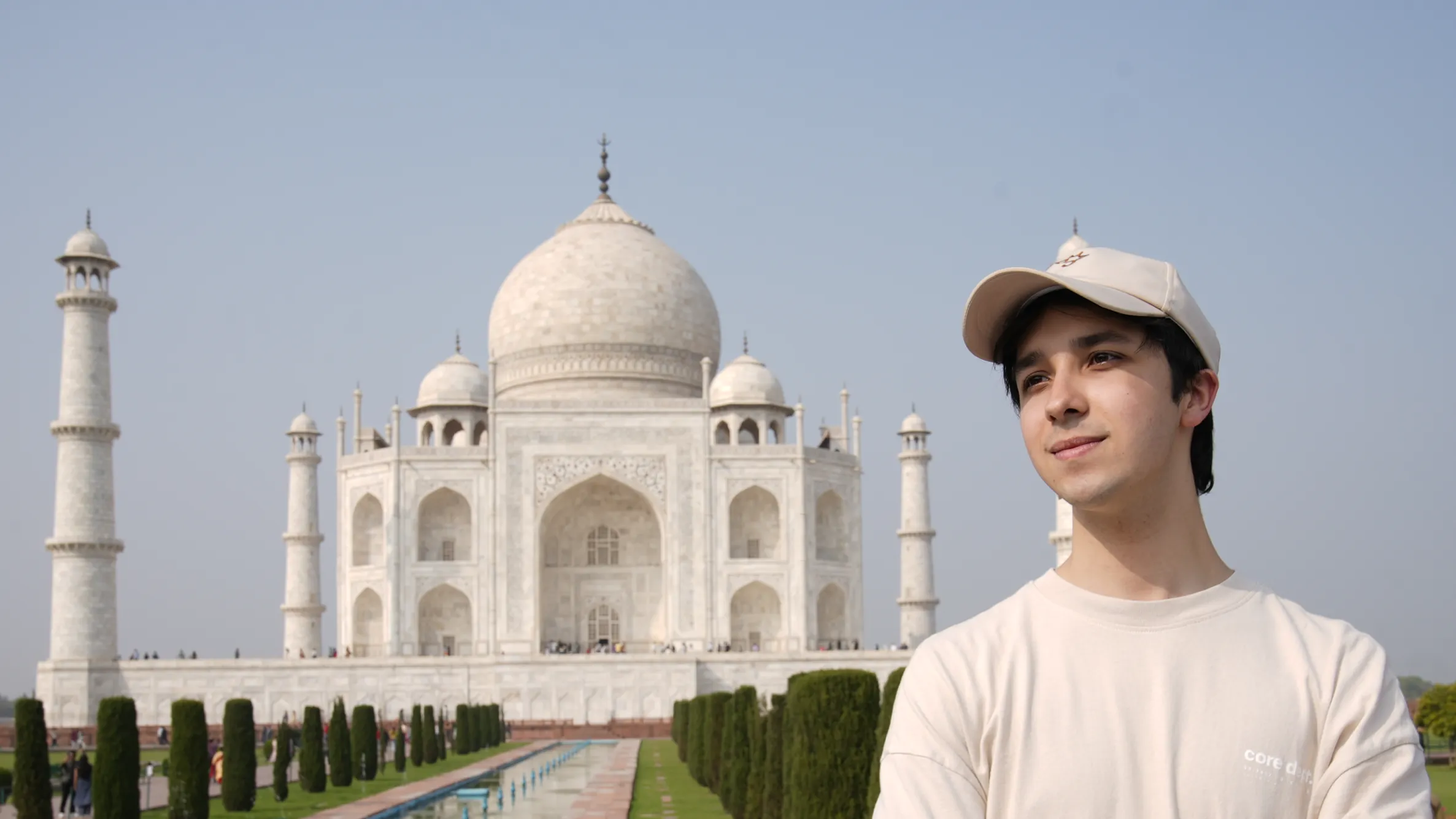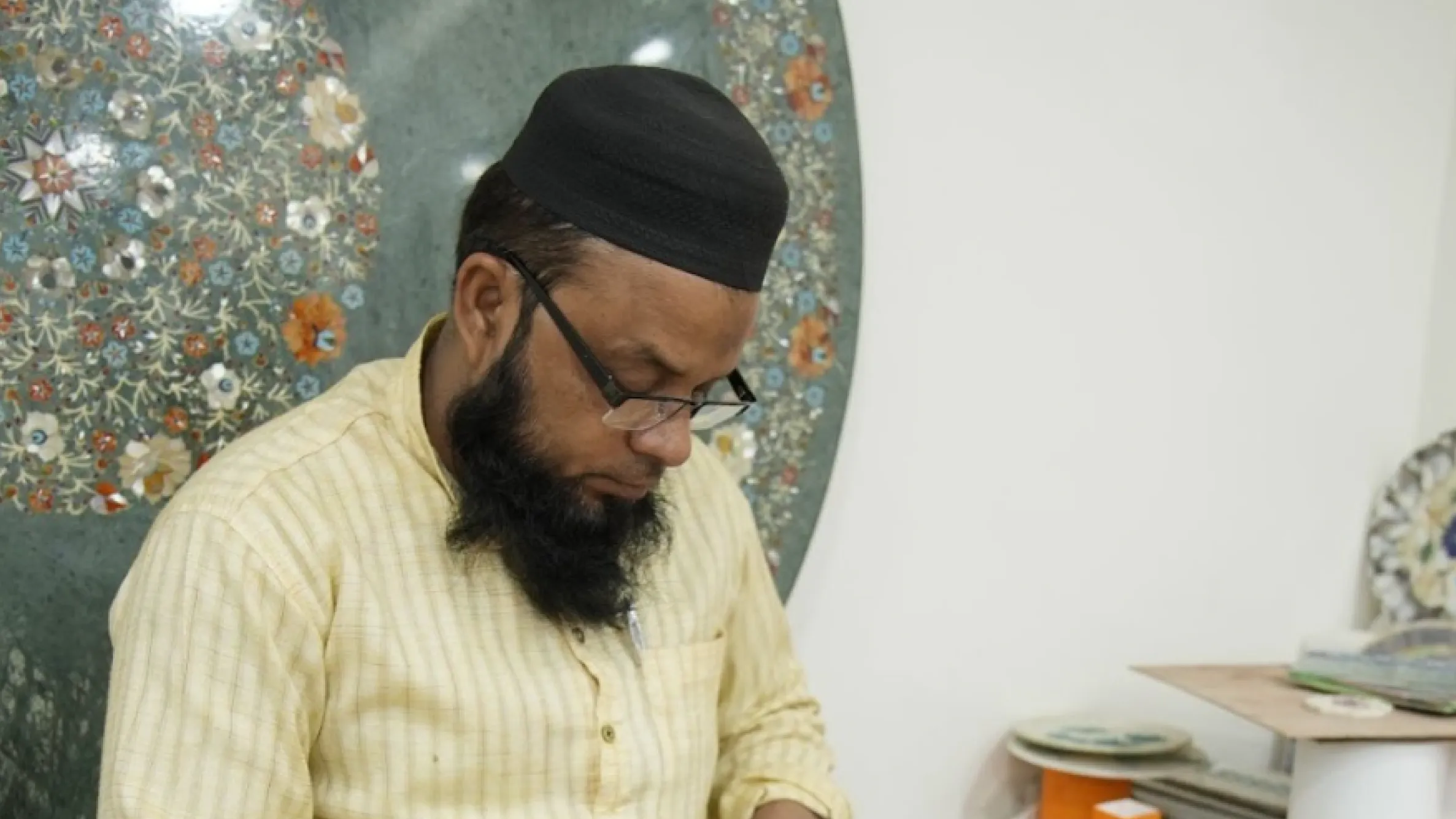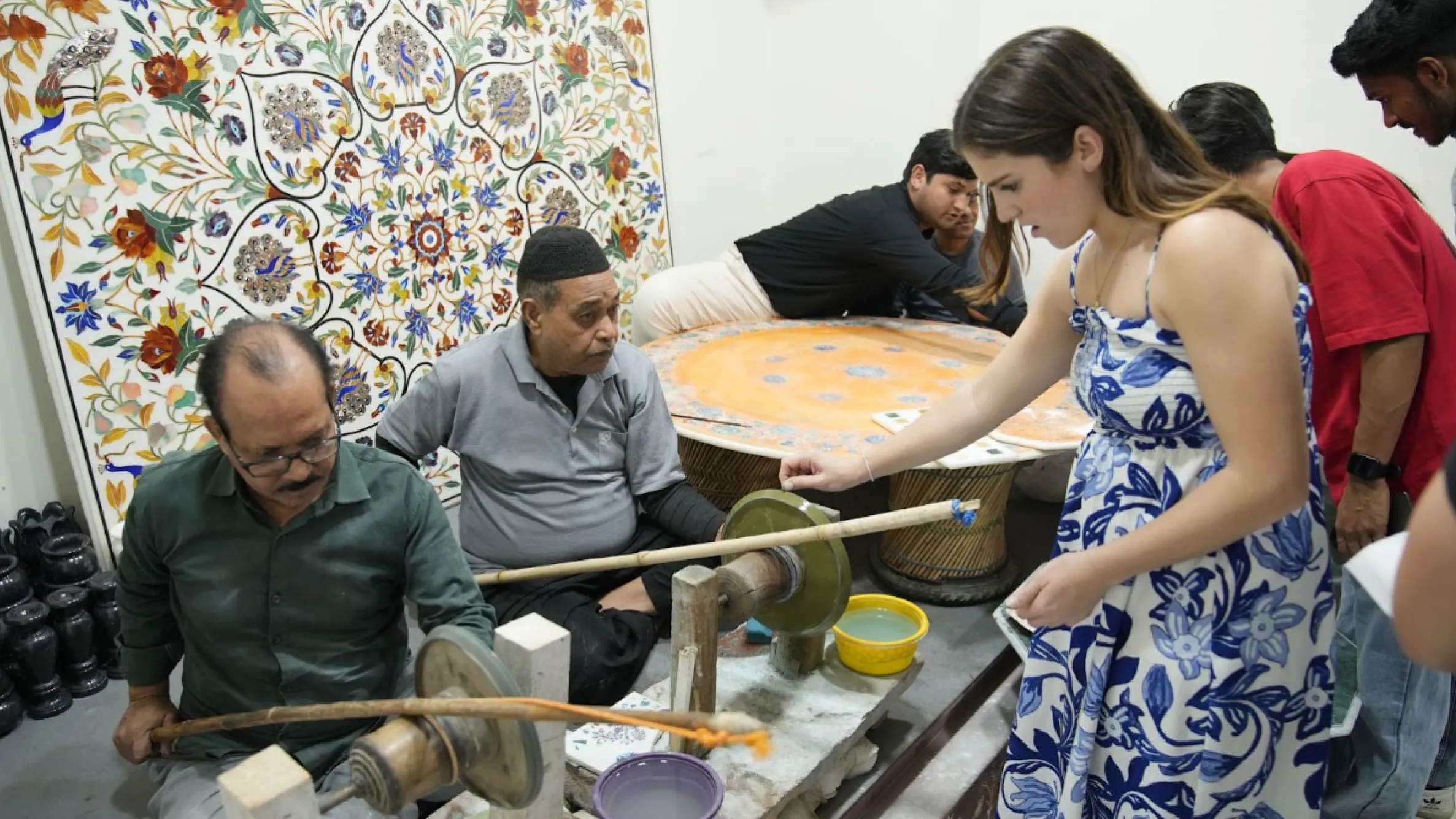



Table of Contents
A hands-on cultural immersion in Agra where Tetr students explored the Taj Mahal and traditional marble inlay craftsmanship.
There are monuments you visit, and then there are icons that leave a lasting impression. For Tetr students, their immersion in Agra was a deep dive into the soul of Indian heritage - centered around the awe-inspiring Taj Mahal. But this journey wasn’t just about marveling at marble, it was about understanding the layers of history, craft, and community that surround it.
As students explored the architectural mastery and symbolic resonance of one of the Seven Wonders of the World, they also stepped into the workshops of 9th-generation artisans - keepers of the intricate art of Parchin Kari. Watching these descendants of the Taj’s original builders hand-carve Makrana marble with emery wheels and chisels was nothing short of witnessing living history.
This immersion wasn’t just about sightseeing, it was a hands-on look at how legacy and livelihood intertwine, and how culture, tourism, and craft continue to shape modern economies and identities.

As students walked through the grand arched gateways and laid eyes on the Taj Mahal, silence spoke louder than words. There it stood - majestic and timeless - its pristine white marble glowing under the morning sun. Surrounded by a sea of people, yet untouched in its serenity, the monument instantly transported everyone to a different era.

Inside a quiet marble workshop, students witnessed more than craftsmanship - they saw history come alive. A 9th-generation artisan delicately inlaid semi-precious stones into Makrana marble, reviving the same Parchin Kari technique used to build the Taj over 400 years ago. With every precise cut and curve, the artisan wasn’t just creating art - he was preserving a legacy passed down through centuries, one stone at a time. It was a powerful moment of connection between past and present.

In a room filled with age-old artistry, students didn’t just observe — they tried their hand at it. Guided by master artisans, they experienced the finesse behind the delicate inlay work of Parchin Kari, understanding the tools, the rhythm, and the stories hidden within each pattern. For a brief moment, they became part of a centuries-old tradition - one that values patience, precision, and passion.
From tracing the arcs of Mughal architecture to chiseling stones alongside master artisans, Tetr students immersed themselves in a world where history breathes and tradition thrives. These are the moments that define Tetr’s hands-on approach - where learning escapes the classroom and enters the real world, forging thinkers who not only observe but engage, reflect, and create.
At Tetr, we don’t just study history - we step into it. And with every immersion, we shape the future. Ready to learn by doing, and explore the world as your classroom? Apply to Tetr and experience immersive education like never before.